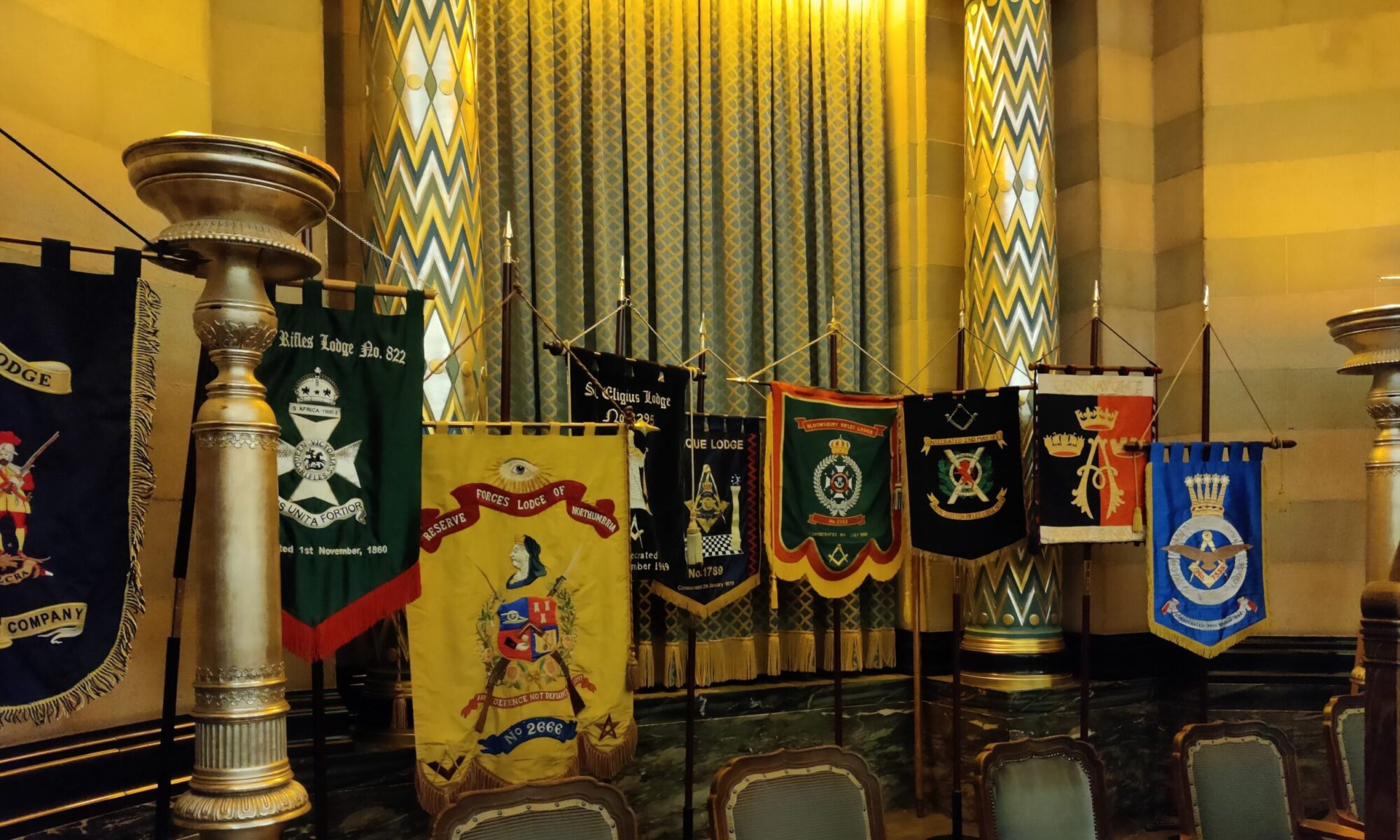The idea of forming an association to which military Lodges could belong, so as to encourage inter-visiting and expand the individual member’s experience of Freemasonry in a congenial and familiar environment was first discussed by three Welshmen following a particularly good dinner with the FitzRoy Lodge many years ago. Hywel Thomas, of Certa Cito, had visited the Public School Lodges Council Festival, where representatives of 32 Lodges gathered at one of their old schools on a summer’s day, and was keen to get an equivalent party going for his many military friends. He discussed this with Vernon Rees of Ubique and Jeremy Havard of FitzRoy, both of whom were in their cups by that stage and who may have murmured approval of the concept as an alternative to buying the next round.
That was all the encouragement Hywel needed to bring to bear his considerable organisational skills and energy on to the subject. He immediately sounded out Sir James Stubbs, the former Grand Secretary and a founder of Certa Cito, who offered some excellent advice. He then trawled through the Masonic yearbook looking for military Lodges and telephoning their secretaries to ask if they were ‘closed’ to civilians! Many Lodges with proud military names (Grenadiers, Royal Scots) are no longer in any sense military and the number who are in any way exclusive is really quite small, but Hywel was not deterred by such details. The other two Welshmen found themselves insinuated into the plans by his sheer tenacity and St Eligius joined the trio to make the fourth and final founding Lodge.
In no time at all he had organised a committee and recruited both Navy Lodge and Royal Air Force Lodge to the undertaking, thus achieving the original intention of making the Circuit a tri-service affair. That done and he went off to see a FitzRoy man, Sir Colin Cole, who was a retired Garter Principal King-at-Arms, to discuss an emblem for the notepaper. Edward Baillieu was asked to become President of the Circuit. He had had a distinguished war record with the Royal Horse Artillery. Further member Lodges were sought, with an approach being considered to the ‘Builders of the Silent Cities’ Lodge, of which Kipling was a founder and was originally the Lodge for the Commonwealth War Graves Commission.
At about that time there was a wonderful Prestonian Lecturer, Freddie Smyth (since OSM) whose lecture “The Master Mason at Arms” explored how military Lodges had spread the Craft throughout the world. This lecture was delivered brilliantly in several of our Lodges and enabled awareness of the Circuit (as it was by then known) to spread.
Three further lodges joined the Circuit, Rosemary Lodge. No 2851, originally the lodge of the Artists Rifles and later drawing its membership from Special Forces; Pegasus Forces Lodge, No 9393, an Airborne Forces lodge based in Hampshire; and Brothers in Arms, No 9540, a lodge based on Salisbury Plain. The list of member lodges reached ten with the addition of United Services Lodge, No 9605, based in Bridgend, South Wales and since then the Circuit has grown to forty five. Victoria Rifles Lodge, No 822, was rescued when on the point of handing in its warrant by a group of Past Masters from military Lodges. It has since been recognised as an Installed Masters’ Lodge and is a genuinely all-service forum in which the members and their guests spend time in perfect peace and harmony. The more recent additions are Shropshire Combined Services, Marine Lodge, Household Division Lodge, Lodge of United Services in Northants, Andover Combined Services Lodge, Surrey United Services Lodge, United Services Lodge in Newmarket, Somerset Military Lodge in Bridgewater, Royal Naval Lodge of Yeovil, the joint 50th members – Royal Naval No. 59 and Royal Engineers No. 2599, Vectis Lodge from Hants and IOW, and out most recent additions: Lodge of Sustainment (RLC), East Lancashire Uniformed Services and Beauchamp (West Kent Military Lodge.
Today, the Circuit has emerged from a state of flux. Whoever it was who said that ours is a dynamic existence, where lack of progress effectively means regression, was not far from the mark. Our Constitution has been changed to facilitate the further development of its original aim: namely to build an organisation for masons who had served in the Armed Forces to meet together. The Circuit gently encourages other Lodges to join, those who have a clear service orientation but whose membership is not necessarily without “a cuckoo in the nest” as was originally required. Additionally, the Circuit now seeks to encourage individual membership from Masons, from the English, Irish, Scottish and other recognised Constitutions, who have similar backgrounds and interests. Who knows, we might even find some US Service personnel and they, too, would be made most welcome – as would the Portuguese, our oldest allies!
